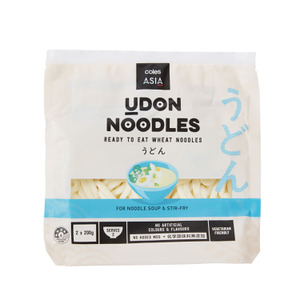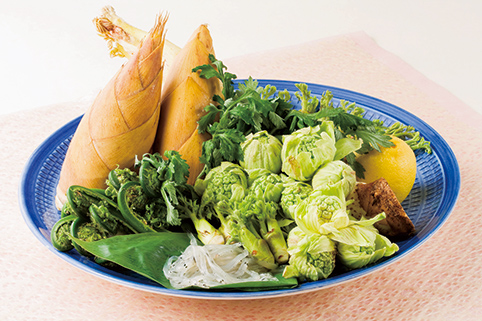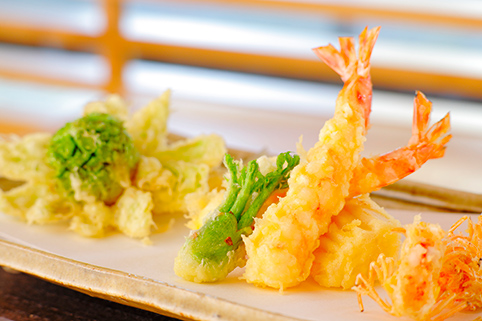Japanese (sansai udon) from Madhur Jaffrey
- rosemary
- Jan 25, 2022
- 7 min read
"Most of the vegetables Keiko used grew wild in the hills around her. Each had been cooked separately and then arranged over the noodles at the last minute. My vegetables are rather more prosaic, but the dish remains delightful - and very healthy, to boot." Madhur Jaffrey

This is a lucky dip post. It's still hot and there is no inspiring dinner tonight - just reheated leftovers, so I turned to my latest lucky dip - chosen by David for me - and this is what I turned up. Noodles in broth with poached egg and vegetables (Sansai udon) as Madhur Jaffrey calls it. For this is from her Step-by-Step Cookery book which covers the Far East as well as India. So, in a way, not really in her comfort zone, although Udon noodles are apparently Japanese comfort food.
But Japanese is definitely not in my comfort zone, although I have to say that, having now done my 'research', yet again I am constantly amazed at how unpromising beginnings - like a Paris street address, a tea towel, and an omelette - oh so many other things - can teach you something, surprise you, maybe even tempt you to try something new. Or rush out and buy another cookbook.
So let's get that initial, not exactly repulsion, at the idea of Japanese food - more like indifference really - out of the way. I found a travel article in The Guardian that rather hit the spot about how I feel about Japan - well most of Asia really.
"Despite the enthusiastic assimilation by contemporary Japanese of every international cultural tic, from dreadlocks to David Beckham, many gaijin (foreign persons) still suspect there's something about the exchange that isn't reciprocal, that aspects of this wealthy modern democracy are being held back or kept secret." Hari Kunzru - The Guardian
Asian cultures are so alien to me in a way. Perhaps it's just a language problem, and if I learnt the language I would not feel so out of my depth when there. I just don't know how to behave. Although, when I think about it, every nation on earth is different to its neighbour, which is kind of strange. Why is this? For fundamentally, when it comes to basics we are really all the same are we not? We love our children, we all experience the same basic emotions to a greater or lesser degree, but somehow every nation has built up institutions, systems and rules - cultural, religious, political, social, that differentiate them from their neighbours.
And when it comes to food, some of 'foreign' food has weird and wonderful stuff in it. For me this is particularly true of Asian food - with the caveat that I know nothing of African or South American - well very little. If I don't recognise it, don't really know what it is I therefore won't try - being one of life's big cowards. All the brave things in my life were done when young. Madhur Jaffrey, however explains why this is foolish.
"You should not be put off by the 'foreignness' of some of the ingredients. Just remember that at one time potatoes, tomatoes and corn were 'foreign' (the came from the New World) and so were mangoes, black pepper and cinnamon (they came from Asia). Ingredients, indeed whole dishes, once travelled through the world at the cumbersome pace of the mortals who transported them - on foot, by boat or on horseback. Today a chef can eat a dish in Hong Kong on one day, and recreate it in his kitchen in New York the following week; a recipe for a curry from Malaysia can be 'faxed' to London the same day and the ingredients for it, what with air transportation and refrigeration, found in many supermarkets." Madhur Jaffrey
And there's another opportunity for an aside. 'Faxed'! That quote was written back in 1989 in her book Far Eastern Cookery, when there was no internet to speak of. I'm not really sure when it came into common usage, but after 1989 I think. Yes indeed - officially in 1991. Anyway today the transmission of ideas, recipes, news - everything is instantaneous, and the spread of ingredients almost as quick. Even in the year 2000, when my lucky dip book was written, Madhur Jaffrey thought that you might be able to get udon noodles in your local Health Food shop. Today you can buy Home Brand udon noodles in your local supermarket for a mere $1.85 for 400g. Or a cup noodle version of the dish we are talking about today.

So let's do udon. Udon have been on my 'to do' list for some time now. They turn up frequently in the supermarket magazines, and The Guardian newsletter, as in this fusion dish Shiro miso udon kale carbonara from Ravinder Bhogal Japanese meets Italian - which is probably something the Japanese themselves would do. The point is that Udon noodles are now such a common ingredient that people do experimental stuff with them. Take from another culture and make it your own. I mean - an Italian/Japanese fusion dish from somebody who sounds somewhat Indian. But this, I have to say, looks tempting.
Udon are thick wheat noodles. They have just three ingredients - the same as for basic pasta - flour, salt and water. Their history is ancient, with Wikipedia offering three origin stories - all with the actual origin being in China - which is sort of apt, since those Coles Udon noodles are made in China. The Japanese though have their own precise way of making them. Do watch the video - it's not very long really. It's an American Michelin starred Italian food chef, having a lesson in making udon in Japan. It's interesting because of his commentary about how different the process and the finished product is from pasta - in lots of different ways. Which rather makes a nonsense of Madhur Jaffrey's suggestion to use either linguine or flat egg noodles, when you can buy fresh udon noodles in your ordinary old supermarket.

Ok - moving on to 'sansai'. Unlike udon, you don't seem to get this packaged in your ordinary supermarket, though I have no doubt that your local Asian supermarket - and we all live somewhere near one of them these days don't we - will do.
"sansai, 'mountain vegetables', the fragrant wild ferns, brackens and tubers that form an integral part of rural Japanese cooking." Hari Kunzru - The Guardian
We are not looking at what we might forage in our mountains, or even the British hills though. A website called Kokoro has a useful list of the most common ones - if you are interested. Below are two of them - kogomi and warabi:
The thing is they are supposed to be really fresh - those in the packet have been cooked fresh and then dried I think, although I'm guessing you can get them frozen too. And apparently in Japan some kinds are now grown commercially. Why sansai?
"Bitter and earthy, these vegetables mark the flavors and cuisine of spring. They can be eaten raw, though they are usually boiled before preparation, and sansai are often prepared as tempura because the oil tends to soften the astringency common to these plants. Additionally, these foraged veggies can make for great pickles, a method used for centuries to preserve these gifts of spring beyond their short yearly appearances." Kokoru
I even saw the tempura sansai topping the udon soups that we are talking about with our original dish.
The particular dish we are talking about today though is a kind of soup, Alas Madhur Jaffrey's recipe is not online, but from the examples I saw online - two versions below, and another picture of Madhur Jaffrey's recipe from her Far Eastern Cookery book (on the left), I'm guessing it's sort of infinitely variable. Well the toppings are anyway. You cook your noodles, place them in a bowl, arrange your cooked vegetables over the top, pour over hot Japanese stock and top with the poached egg. The egg is not at all compulsory, and even though Madhur Jaffrey calls her dish Sansai udon, she doesn't use 'sansai' at all, but a mixture of carrots, green beans, mushrooms, bean shoots and asparagus. Well I did see it somewhere described as comfort food.
As to the poached eggs, you get a bonus lesson in how to cook them from the originator of the recipe Keiko Okamato.
"As far as poaching the eggs is concerned, I have never seen it done more casually or more successfully than it was by Keiko. She just put some water in a frying-pan and it had barely come to a simmer when she cracked 4 eggs into it. Then, before the eggs were fully set, she loosely covered the pan and turned off the heat, leaving them to stand until they were done. The eggs were perfect - as mine are now that I do them this way." Madhur Jaffrey
Plus instructions on how to eat your sansai udon:
"You are supposed to pick up the noodles with chopsticks, then suck them in with a deep intake of breath that cools them off. Loud noises made in the process are considered normal and indicative of pleasure. All solids are picked up with the chopsticks. To drink the broth, chopsticks are left on rests and the bowl is picked up with both hands and brought directly to the mouth" Madhur Jaffrey
Which is all very precise and another cause of cultural anxiety for me. Am I eating it the right way? But then again, even the French have different ways of eating their food, Italians too. Well everyone really.

"Japanese food is meant to serve the same purpose - to create order out of chaos, to bring a sense of simplicity and perfection to a confused and entangled world." Madhur Jaffrey
In his Guardian article Hari Kunzru mentioned the film Lost in Translation as conveying perfectly that sense of cultural dislocation and misunderstanding that I, at least, feel when confronting Japanese food - even though it is completely mainstream these days. My granddaughters sometimes make their own sushi for example.

Anyway from an unpromising lucky dip I have learnt the subtle differences between udon and pasta - I found that video really interesting - just ignore the American accents. I have discovered a fair bit about 'sansai', pondered on how times have changed from 'faxing' to Instagram and also that some cookbook writers - well possibly lots of them - just repeat themselves here and there. Both of the lengthy introductions to this recipe in Madhur Jaffrey's two books were word for word the same, although slightly reordered. And also you can make the same dish look quite different by using a different photographer, and, I'm guessing, slightly different ingredients.

























Comments